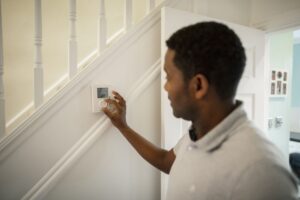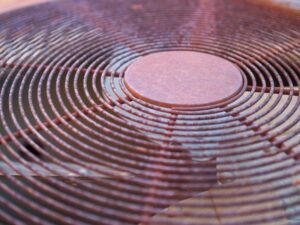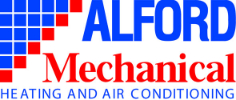So What Is Dirty Sock Syndrome?
Do you get a mildew-type odor when your HVAC system first starts up?
If so, this article may expalin some of the reasons for that odor.
From information gathered over many years, most professionals agree the “Dirty Sock Syndrome” is caused by a bacteria that collects and grows on the indoor coils of heat pumps and air conditioners.
Complaints normally surface when heat pumps go into defrost, or when systems are run in heating for a brief time then switched back into cooling. The bacteria or odor collects and grows on the coil during this heating time and is released all at once when the indoor coil gets cool and damp. Heat pump owners notice the odor when the system goes into defrost, usually when the outdoor temperature dips below 40 degrees. Heat pumps and air conditioners experience the problem, when the air conditioner is turned back on after the heating has been used. Our climate can require heating in the morning and cooling in the afternoon. This is a perfect condition for a complaint to surface.
“Most customers describe the odor as a musky, dirty, locker room smell.
The problem is similar to an odor that is blown out of a car air conditioner when the AC has not been used for a while.”
It is very important to properly identify the problem before any action can be taken, since many odor problems are incorrectly labeled as a dirty sock problem. Eliminate dirty drain pans holding water, drain lines connected to plumbing systems without adequate traps or dry traps, return air leaks in ductwork or chases, or dead animals in ductwork or near the living space. If the odor is present ALL the time, especially during heat, the problem is NOT a dirty sock syndrome complaint. Dirty sock complaints only smell when the indoor coil gets cool and the bacteria releases its odor into the air stream.
The Dirty Sock Syndrome plagues 0.5 to 2 percent of heat pumps in the southern states, with Texas being on the lower side of the percentage. The syndrome is not brand specific, with all manufacturers acknowledging complaints. The problem itself is sporadic and limited to isolated households and is somehow related to the living style or products in the home. This can be proven as Trane and other manufacturers have documented changing out systems with new product and the complaint returns. After removing a “stinky” unit from a complaint house, the unit can be cleaned and installed elsewhere without a complaint surfacing. Changing the brand of equipment is met with a similar lack of success. In one instance a complaining customer underwent a divorce and when one of them moved out of the home, the problem went away.
Much effort and expense has been given by the industry to research and solve this syndrome, and Trane alone admits to spending tens of thousands of dollars in their effort. In an effort to determine what in these homes could create the complaints, Trane has taken numerous air samples looking for a common denominator with no successful results.
Once the problem has been properly identified, action can then be taken to resolve or reduce the complaint, starting with a thorough cleaning of the evaporator coil with a non-acid coil cleaner. Cleaning will bring the system back to normal and will usually prevent a complaint for the rest of the heating season. Some systems cleaned early in the season or those having more of a problem may have repeated problems during the same season, especially if the weather conditions force a system back and forth from heating to cooling. The majority of complaints are resolved with a thorough cleaning.
If the coil cleaning does not resolve the complaint to a satisfactory level, the next suggested action would be to clean the coil again and apply a coating of Alathene II, a special spray designed to continuously protect coils from fouling caused by airborne contaminates. If seasonal cleanings or the application of Alathene II does not resolve the complaint, as a last resort, your coil may need to be replaced. Alford Mechanical has available, tin-plated coils which can greatly reduce the chances of Dity Sock Syndrome, returning.
Dirty Sock Syndrome complaints can be quite emotional and are generally aimed at the equipment manufacturer. Hopefully the information in this document will educate customers and service providers to the real cause of the problem: Airborne Contaminants that are circulated into the heating and air conditioning system via the return air duct system.
You May Also Like

3 Myths About Geothermal HVAC in Louisburg, NC
Geothermal HVAC systems are efficient and powerful interior comfort systems that can provide homeowners in Louisburg, NC, with enormous and wide-ranging benefits.… Continue Reading 3 Myths About Geothermal HVAC in Louisburg, NC…

3 Mistakes to Avoid With Your Thermostat in Wake County, NC
The thermostat is an integral part of your Wake County, NC home’s HVAC system for controlling your indoor comfort. Here are three… Continue Reading 3 Mistakes to Avoid With Your Thermostat in Wake County, NC…

Should I Replace My Old AC in Knightdale, NC?
When warmer weather arrives, and you fire up the air conditioner in your Knightdale, NC home, you may wonder if it’s time… Continue Reading Should I Replace My Old AC in Knightdale, NC?…
